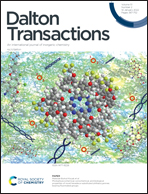Impact of the coordination of multiple Lewis acid functions on the electronic structure and vn configuration of a metal center
Abstract
The covalent bond classification (CBC) method represents a molecule as MLlXxZz by evaluating the total number of L, X and Z functions interacting with M. The CBC method is a simplistic approach that is based on the notion that the bonding of a ligating atom (or group of atoms) can be expressed in terms of the number of electrons it contributes to a 2-electron bond. In many cases, the bonding in a molecule of interest can be described in terms of a 2-center 2-electron bonding model and the MLlXxZz classification can be derived straightforwardly by considering each ligand independently. However, the bonding within a molecule cannot always be described satisfactorily by using a 2-center 2-electron model and, in such situations, the MLlXxZz classification requires a more detailed consideration than one in which each ligand is treated in an independent manner. The purpose of this article is to provide examples of how the MLlXxZz classification is obtained in the presence of multicenter bonding interactions. Specific emphasis is given to the treatment of multiple π-acceptor ligands and the impact on the vn configuration, i.e. the number of formally nonbonding electrons on an element of interest.

- This article is part of the themed collection: 2021 Frontier and Perspective articles


 Please wait while we load your content...
Please wait while we load your content...